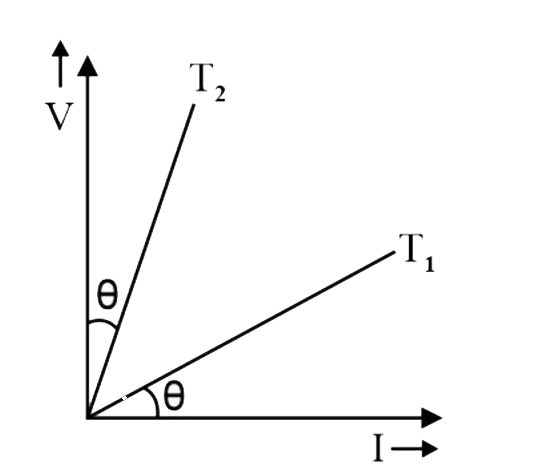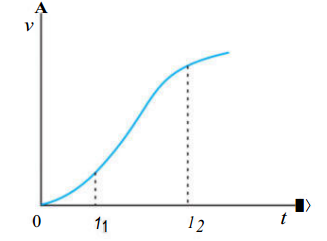The velocity-time graph of particle in one dimensional motion is shown in the fig.
![The velocity-time graph of particle in one dimensional motion is shown in the fig. Which if the following formulae are correct for describing the motion of the pawrticle over the time interval t1 to t2 v(t2) = v(t1) + a(t2 - t2), v(average) = ([x(t2) - x(t1)])/((t2 - t1)), x(t2) - x(t1) = area under the v - t curve. bounded by the t-axis and the dotted line shown.](https://d10lpgp6xz60nq.cloudfront.net/physics_images/MBD_ASK_PHY_XI_U02_C03_S02_038_Q01.png)
Which if the following formulae are correct for describing the motion of the pawrticle over the time interval t1→t2
v(t2)=v(t1)+a(t2−t2), vavera≥=[x(t2)−x(t1)](t2−t1), x(t2)−x(t1)= area under the v - t curve. bounded by the t-axis and the dotted line shown.Solution in Punjabi
Step by step video & image solution for The velocity-time graph of particle in one dimensional motion is shown in the fig. Which if the following formulae are correct for describing the motion of the pawrticle over the time interval t_1 to t_2 v(t_2) = v(t_1) + a(t_2 - t_2), v_(average) = ([x(t_2) - x(t_1)])/((t_2 - t_1)), x(t_2) - x(t_1) = area under the v - t curve. bounded by the t-axis and the dotted line shown. by Physics experts to help you in doubts & scoring excellent marks in Class 11 exams.
Updated on:21/07/2023Topper's Solved these Questions
- MOTION IN A STRAIGHT LINEBOOK - MBDCHAPTER - MOTION IN A STRAIGHT LINEEXERCISE - EXERCISE
14 Videos
- MOTION IN A PLANEBOOK - MBDCHAPTER - MOTION IN A PLANEEXERCISE - EXERCISE
17 Videos
- MOTION OF SYSTEM OF PARTICLES AND RIGID BODYBOOK - MBDCHAPTER - MOTION OF SYSTEM OF PARTICLES AND RIGID BODYEXERCISE - EXERCISE
15 Videos
Similar Questions
In which of the following examples of motion, can the body be considered approximately a point object:
View SolutionIs it necessary to mention the direction of a vector having zero magnitude?
View SolutionDefine centre of mass.
View SolutionThe V-i graph for a conductor at temeratures T_1 and T_2 are as shown in the figure. (T_2 - T_1) is alphaortional to. .
View SolutionThe V - I graphs for a conductor at temperature T1andT2 are shown in the figure (T2−T1) is proportional to

View Solutionताप T1 तथा T2(T2>T1) पर कृष्णिका विकिरण वक्र नीचे दिखाए गए है। इनमें से कौन सा वक्र आलेख सही है?
View SolutionThe velocity-time graph of a particle in one-dimensional motion is shown in Fig. 3.29 :-Which of the following formulae are correct for describing the motion of the particle over the time-interval t_1 to t_2 :- x(t_2)=x(t_1)+v(t_1)(t_2-t_1)+(1/2)a(t_2-t_1)^2
View SolutionThe velocity-time graph of a particle in one-dimensional motion is shown in Fig. 3.29 :- Which of the following formulae are correct for describing the motion of the particle over the time-interval:- v(t_2)=v(t_1) + a (t_2 - t_1)
View SolutionThe velocity-time graph of a particle in one-dimensional motion is shown in Fig. 3.29 :- Which of the following formulae are correct for describing the motion of the particle over the time-interval:- vavera≥=x(t2)−x(t1)t2−t1

View SolutionThe velocity-time graph of a particle in one-dimensional motion is shown in Fig. 3.29 :- Which of the following formulae are correct for describing the motion of the particle over the time-interval:- x(t_2)=x(t_1)+v_average(t_2-t_1)+(1/2) a_average(t_2-t_1)^2
View SolutionThe velocity-time graph of a particle in one-dimensional motion is shown in Fig. 3.29 :- Which of the following formulae are correct for describing the motion of the particle over the time-interval:-x(t2)−x(t1) area under the v-t curve bounded by the t-axis and the dotted line shown.

View SolutionFor any arbitrary motion in space, which of the following relations are true :-vavera≥=[r(t2)−rt1t2−t1(The ‘average’ stands for average of the quantity over the time interval t1→t2)
View SolutionFor any arbitrary motion in space, which of the following relations are true :- aaveragv(t2)−v(t1)t2−t1(The ‘average’ stands for average of the quantity over the time interval t1→t2)
View SolutionThe normal drawn at a point (at21,−2at1) of the parabola y2=4ax meets it again in the point (at22,2at2), then t2=t1+2t1 (b) t2=t1−2t1 t2=−t1+2t1 (d) t2=−t1−2t1
View SolutionLet T bt the set of all triangle in the coordinate plane. Show that the relations in T defined as R1={(T1,T2):T1,T2∈T} T1 is similar to T2 and R2={(T1,T2):T1,T2∈T}, T1 is congruent to T2, are equivalence relations.
View Solution
